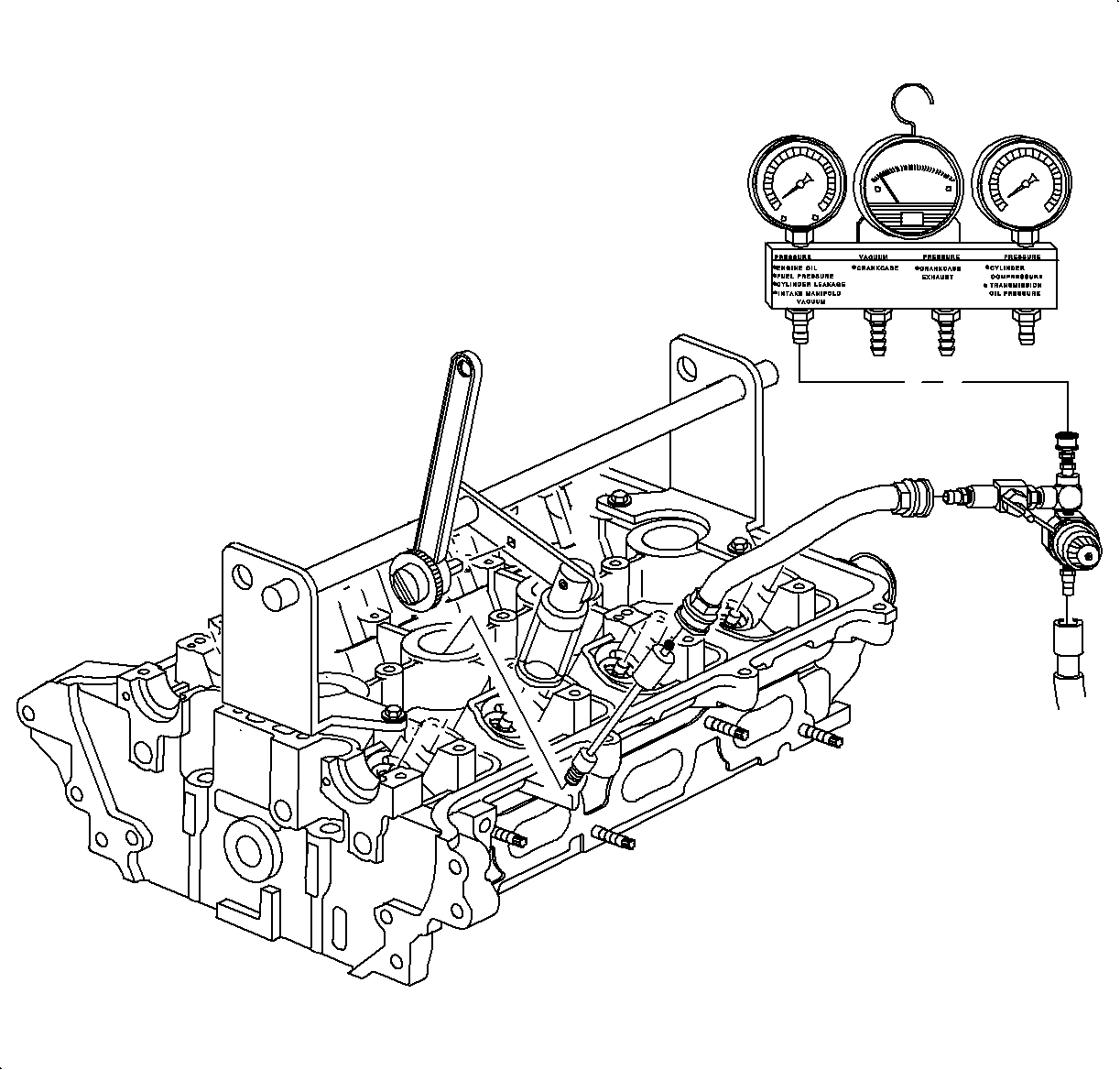
Caution: Do not allow smoking or the use of open flames in the area where work on the
fuel or EVAP system is taking place. Anytime work is being done on the
fuel system, disconnect the negative battery cable, except for those tests where battery
voltage is required.
Important: Camshafts can be removed using the J 43299
. The SA9127E
is
used for pressurizing the cylinder with 690 kPa (100 psi) of air to
hold the valves closed. Valve springs, caps, and stem seals can be replaced without
removing the cylinder head using the SA9124E. Rocker arm assemblies can be removed
using the J 43223
. Refer to Camshaft and Lifter
Replacement and Valve Spring and Stem Seal Replacement In-Vehicle.
- Disconnect the cable from the negative terminal of the battery and remove the
coolant bottle cap.

Notice: The engine's cooling system thermostat and water pump will not function correctly
if oil is found in the cooling system. The cooling system must be flushed and the
water pump and the thermostat's cartridge replaced.
- Drain coolant from the radiator and engine. The
engine drain is at the right front corner of the engine block under the thermostat
housing.

- Remove the air cleaner cover assembly and air inlet
duct. Lift the resonator upward to disengage the button from the engine service support
bracket.
- Disconnect the cam cover air hose at the cam cover.
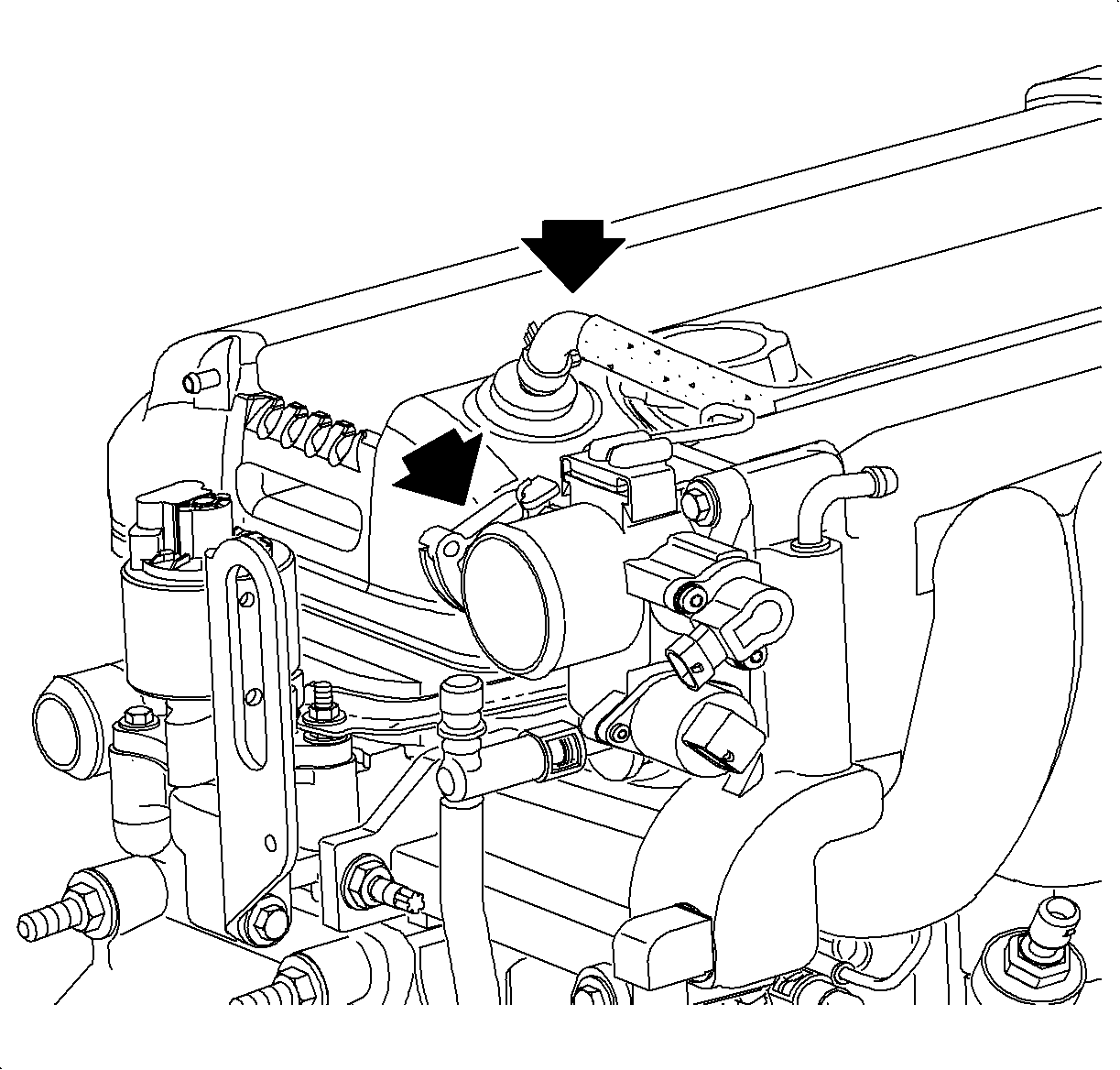
Important: The throttle body assembly, fuel rail, injectors,
and intake manifold can be removed with the cylinder head assembly from the vehicle.
- Disconnect the accelerator cable from the throttle body and intake manifold
bracket.
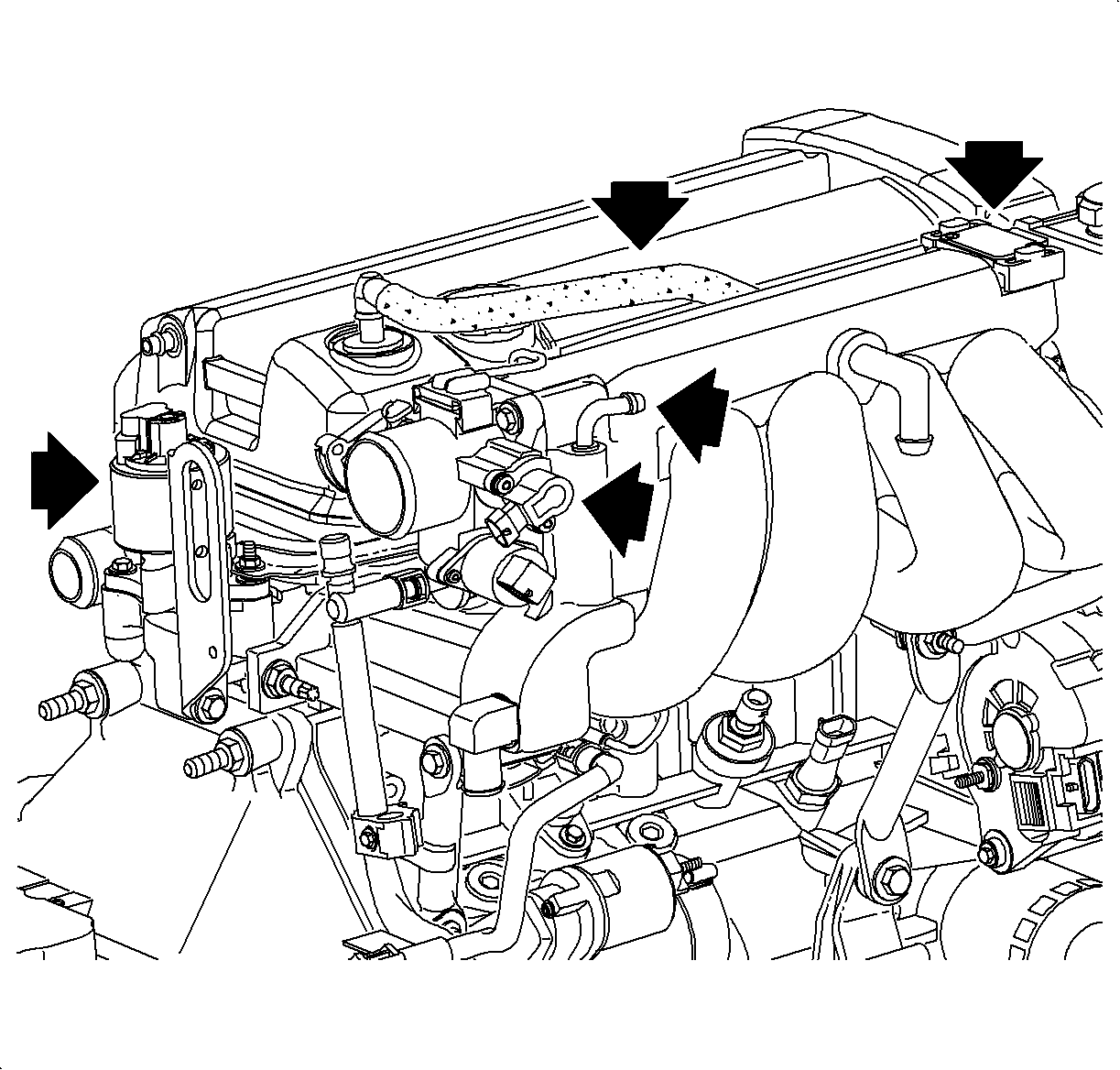
- Remove the following electrical connectors:
| | Important: Use long nose pliers to remove the coolant
temperature connectors.
|
| • | Coolant temperature gage and the PCM connector located at the rear side of the
head |
| • | Idle air control (IAC) valve |
| • | Throttle position (TP) sensor |
| • | Manifold air pressure (MAP) |
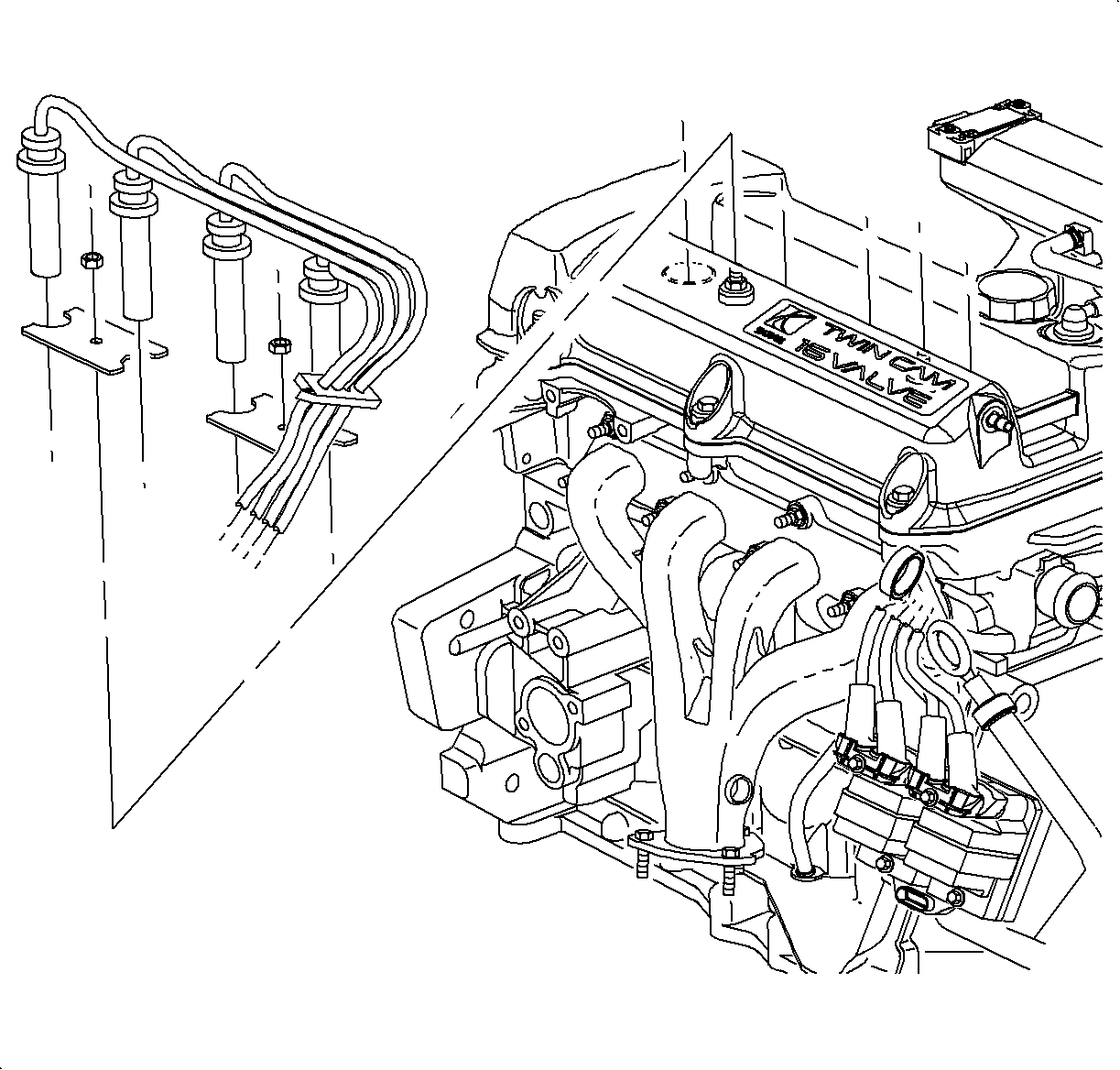
| • | Air conditioner compressor |
| • | Exhaust gas recirculation (EGR) |
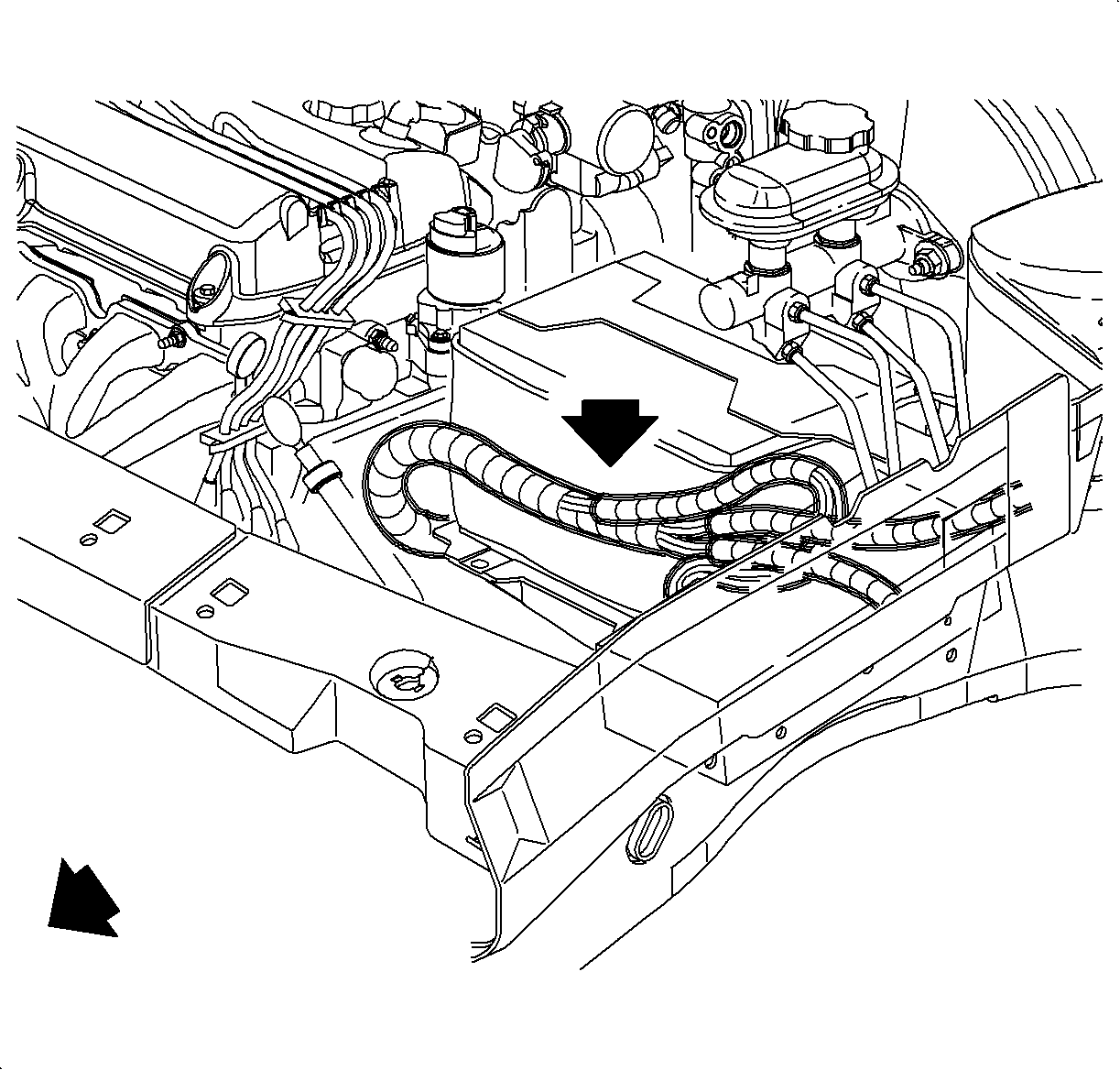
- Lay the harness over onto the underhood junction block
and battery cover.
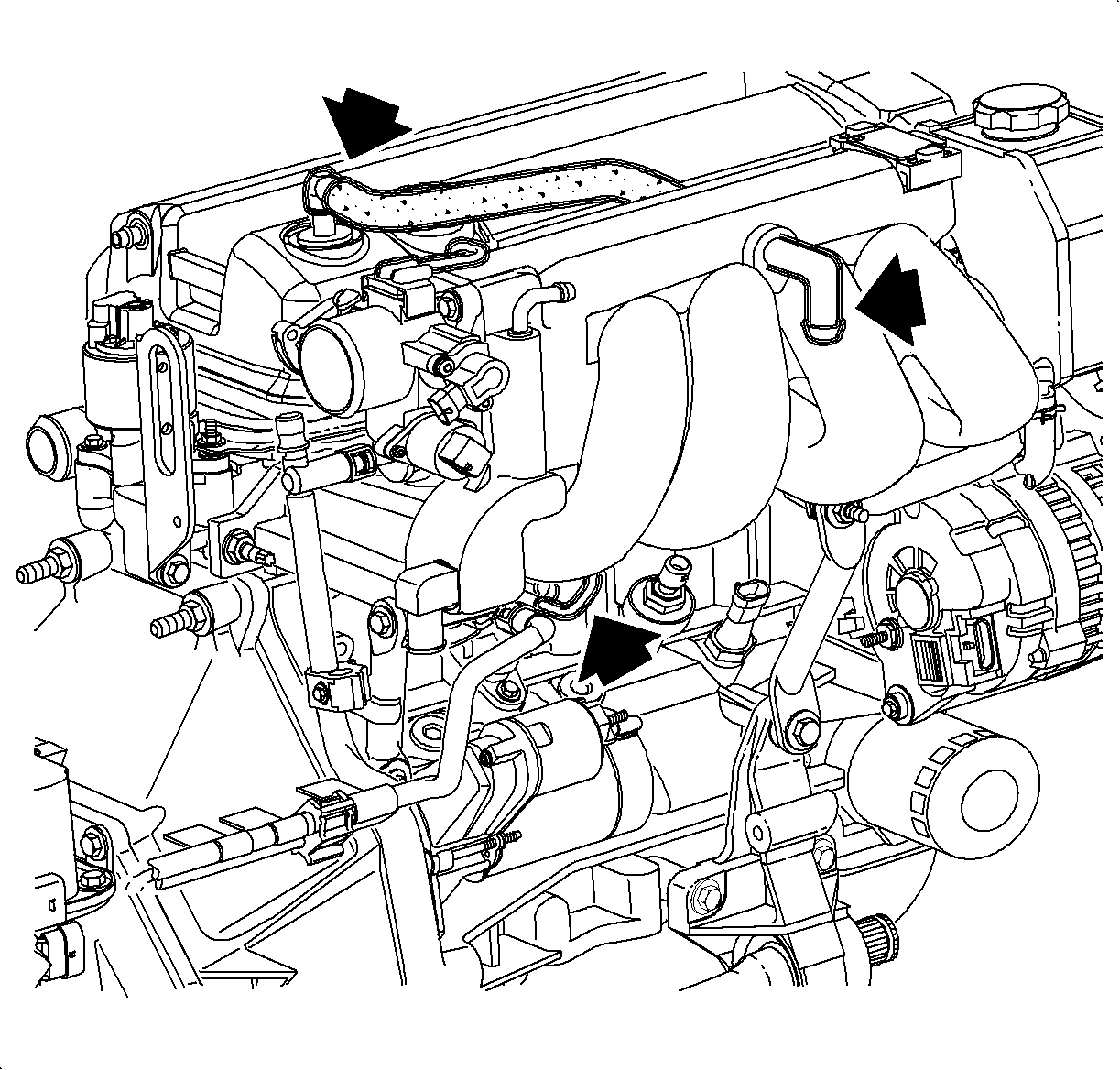
- Disconnect the following vacuum hoses:
| • | EVAP canister purge valve |
| • | PCV hose at the cam cover |
| • | Throttle body connector |
| | Important: The MAP sensor does not require removal.
|
| • | Vacuum brake booster hose at the brake booster |
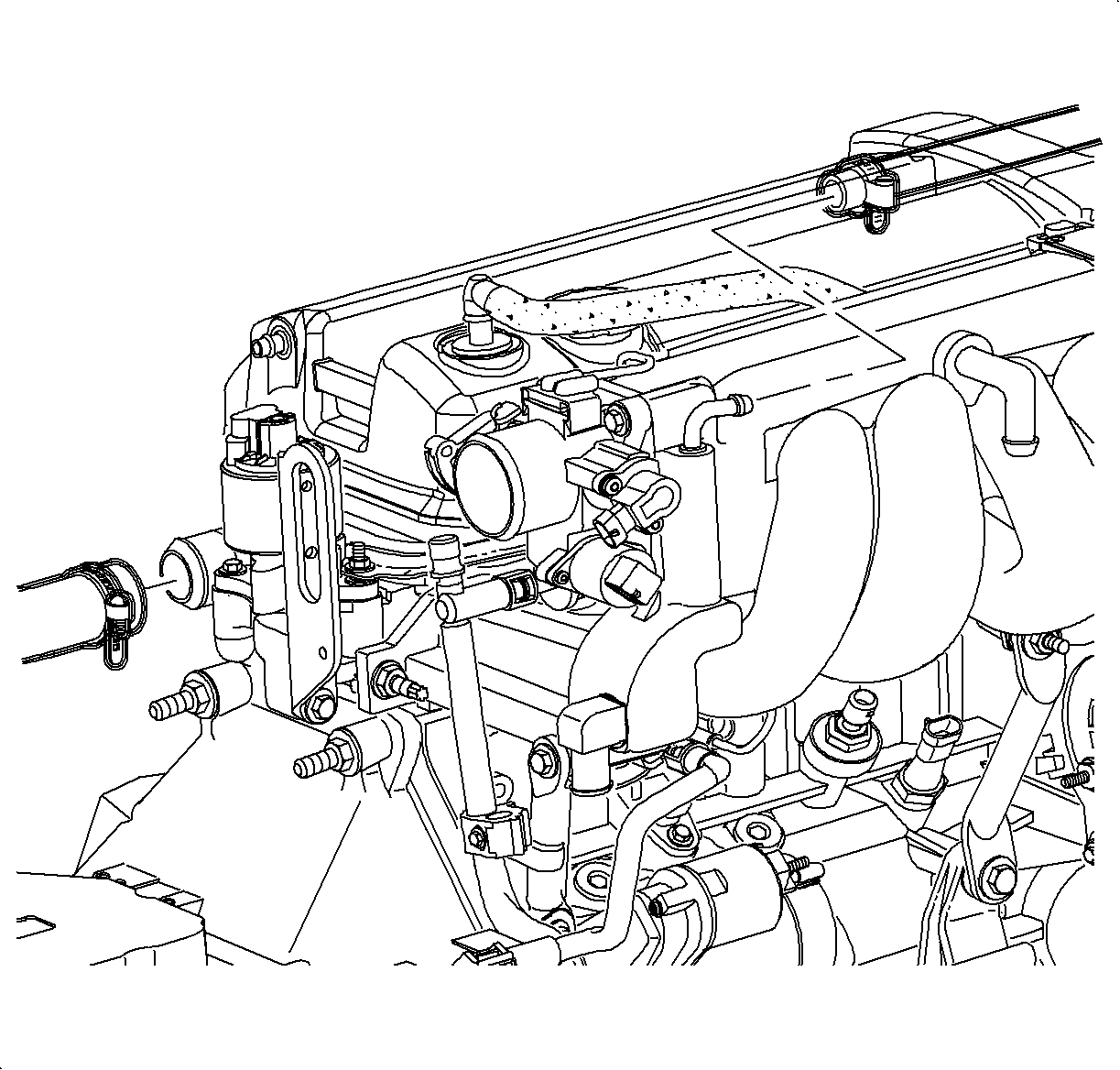
- Disconnect the following hoses:
| | Important: Use the SA911E, Snap-on® Tool HPC10 or
equivalent, to remove the hose clamps.
|
| • | Upper radiator hose at the cylinder head outlet |
| • | Deaeration hose at the intake manifold |
| • | Heater hose at the intake manifold or front of dash |
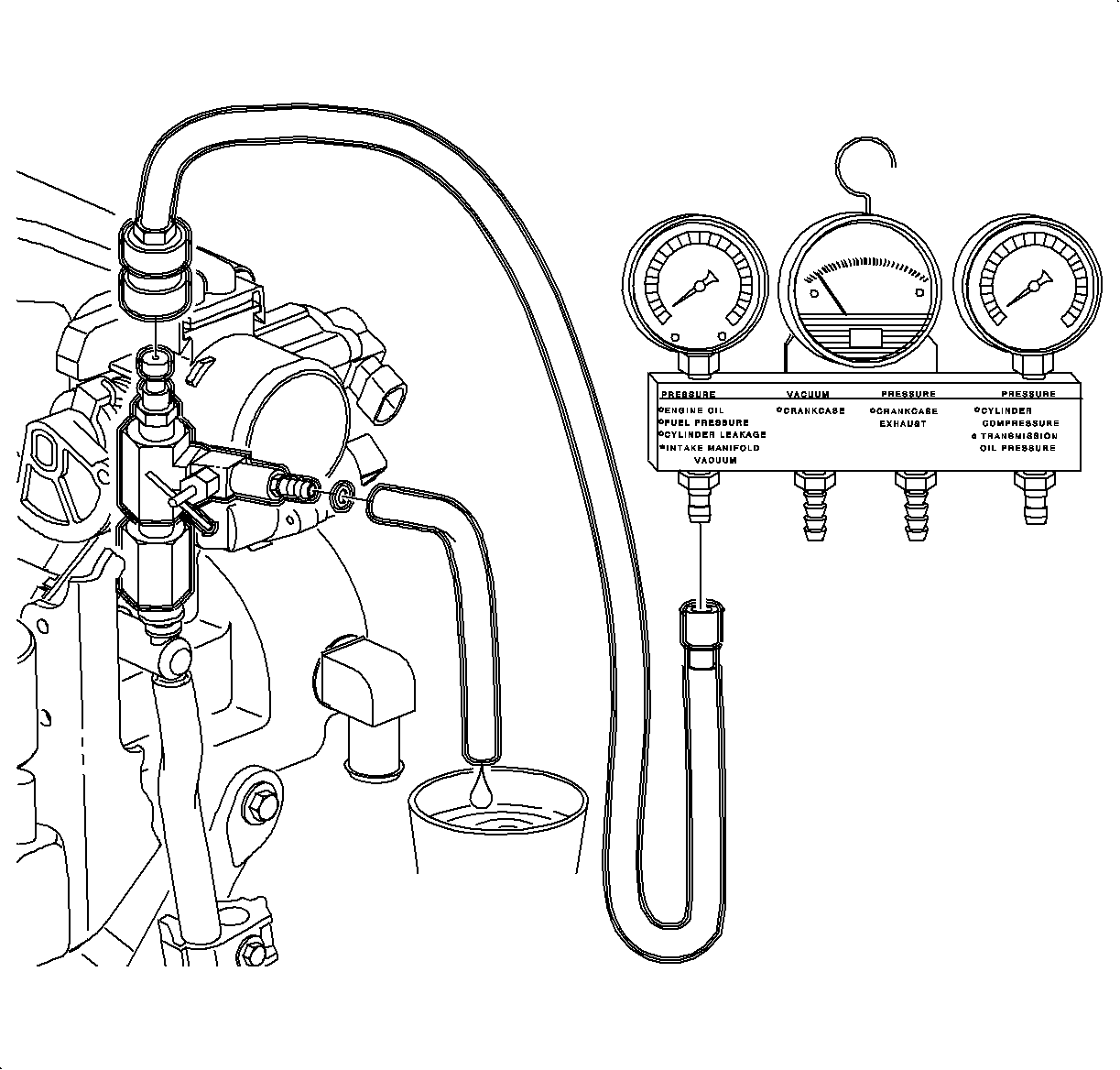
Caution: Catch leaking fuel in a container whenever fittings are loosened or lines are
disconnected.
- Disconnect the fuel line.
| 10.1. | Fuel pressure can be bled into an approved container using the SA9127E
. |
| 10.2. | Remove the attachment bolt that clamps fuel lines to the intake manifold
support brace. |
| 10.3. | Disconnect the fuel supply line to the fuel rail. |
| 10.4. | Remove the upper intake manifold support bracket bolt. |
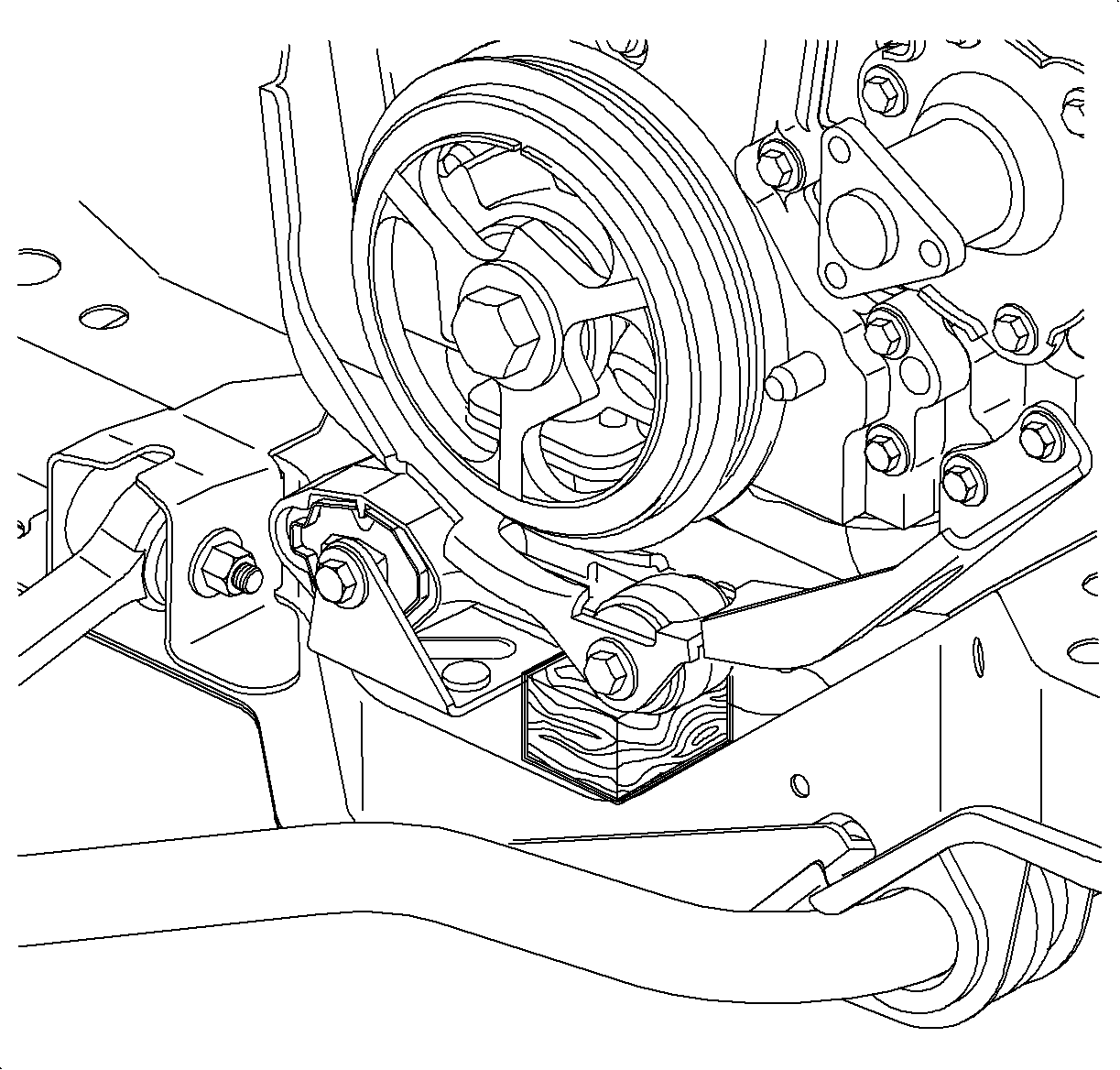
Important: Installation of the wood block prior to upper
engine torque axis mount removal allows the mount to be easily installed without lifting
or jacking the powertrain.
- Unclip the lower splash shield attachments and place a 1 in. x 1 in. x 2 in.
long block of wood between the torque strut and cradle.
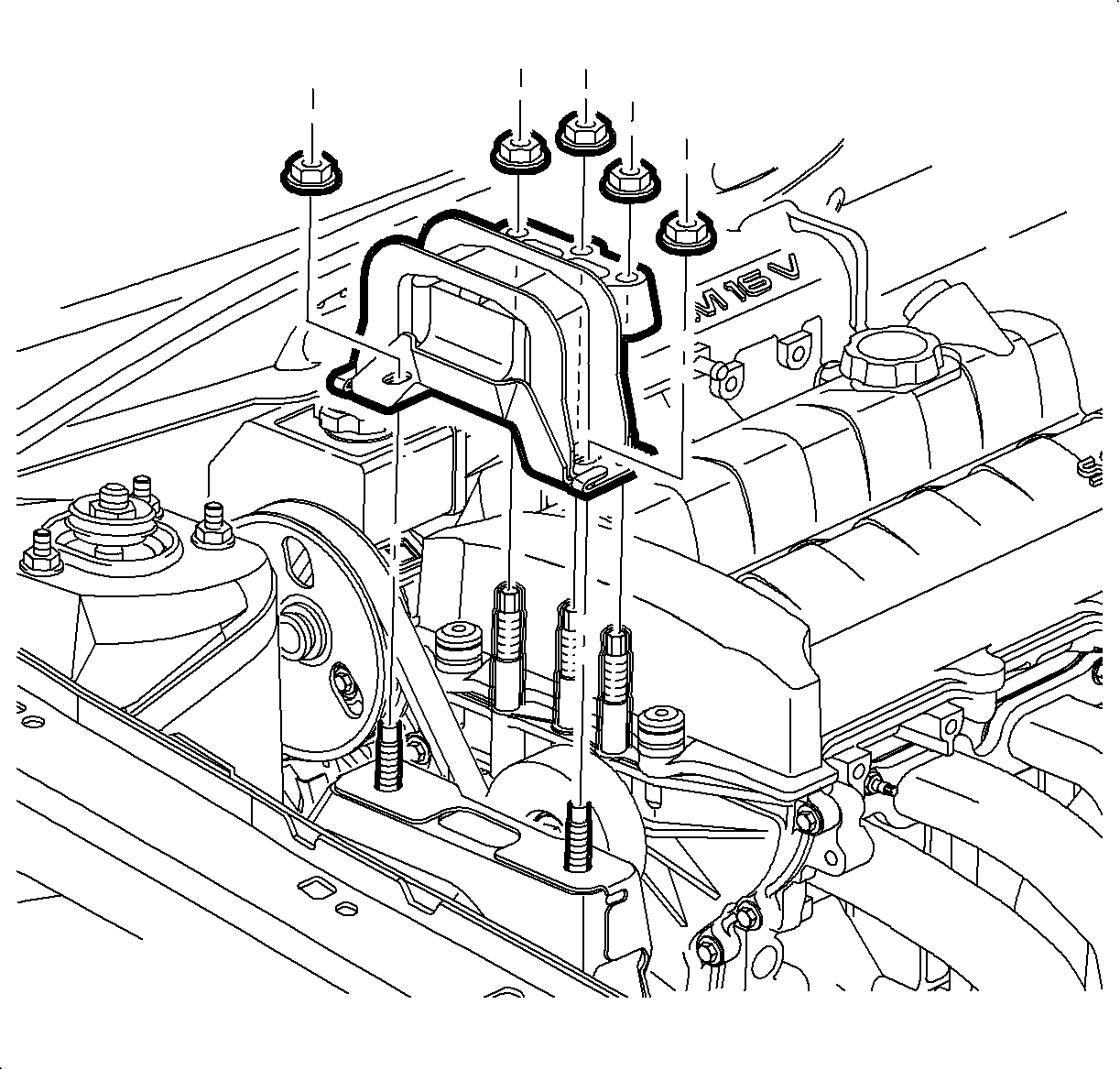
- Remove the 3 right-hand, upper engine torque
axis mount to front cover nuts and the 2 mounts to midrail bracket nuts, allowing
the powertrain to rest on the block of wood.
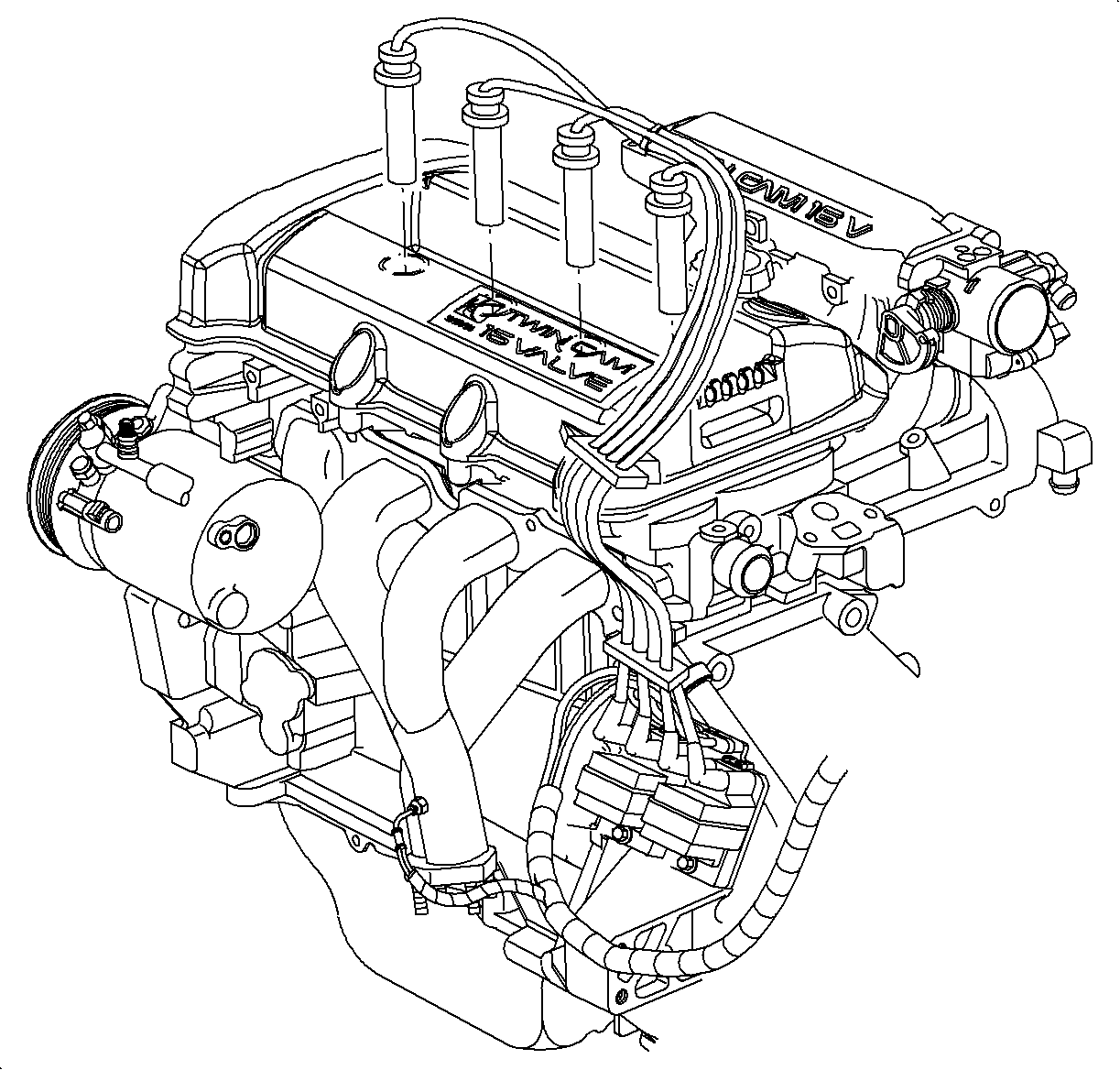
Important: The accessory drive belt idler pulley must
be removed to allow the front cover to be removed and replaced in the vehicle.
- Remove the accessory drive belt and tensioner. It is not necessary to remove
the water pump pulley.
Important: Cover the camshaft area whenever repairs
are not being performed to prevent foreign debris from entering the engine.
Important: Inspect the 8 cam cover silicone isolators
for cracks. Replace the isolators if deterioration exists.
- Remove the camshaft cover assembly.
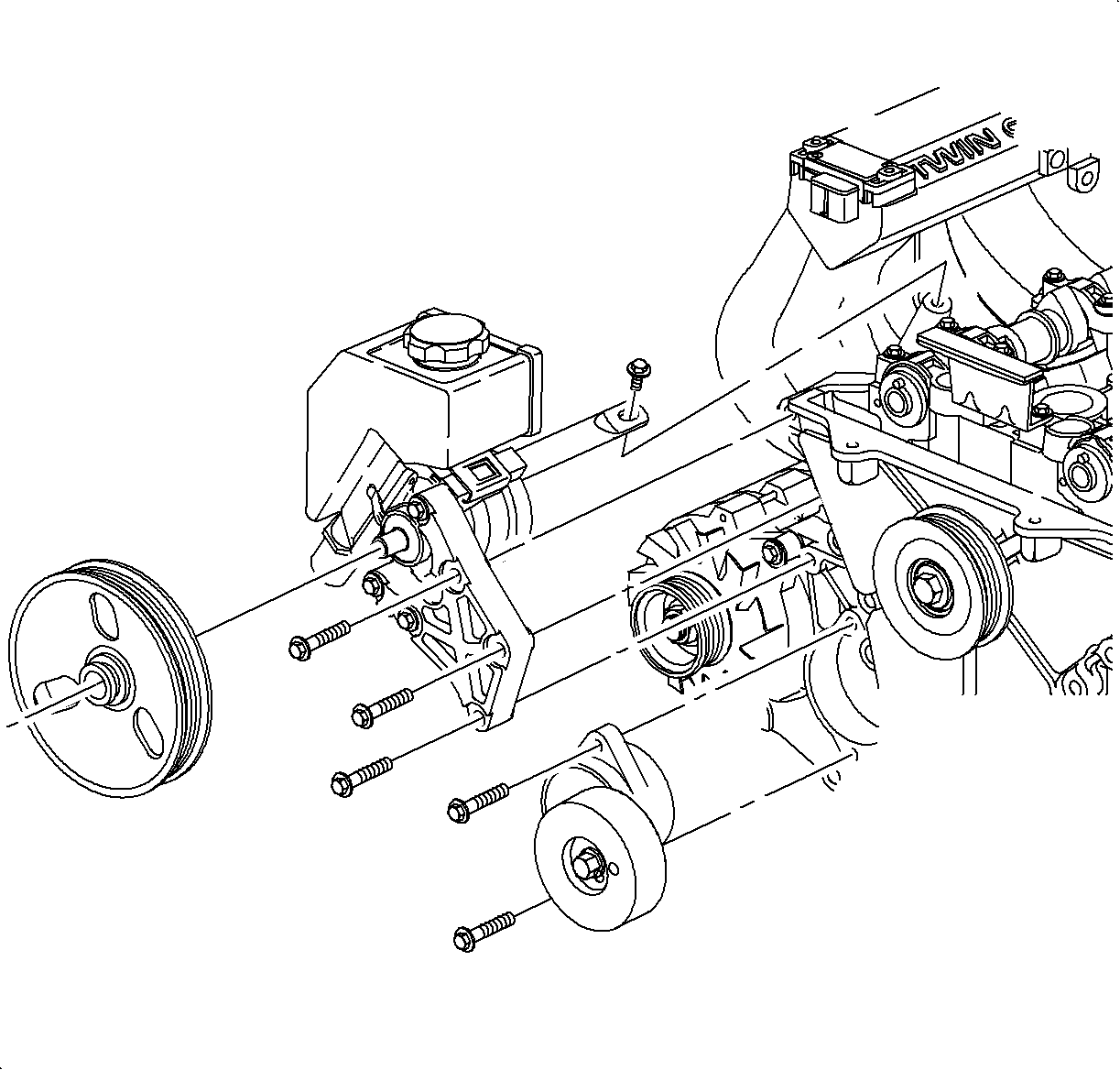
Important: It is not necessary to remove the water pump
pulley.
- Remove the 5 power steering pump bracket attachment bolts, if equipped,
and position the pump next to the right-hand front of dash panel, away from the cylinder
head and intake manifold. Refer to Engine Drive Belt and Accessories.
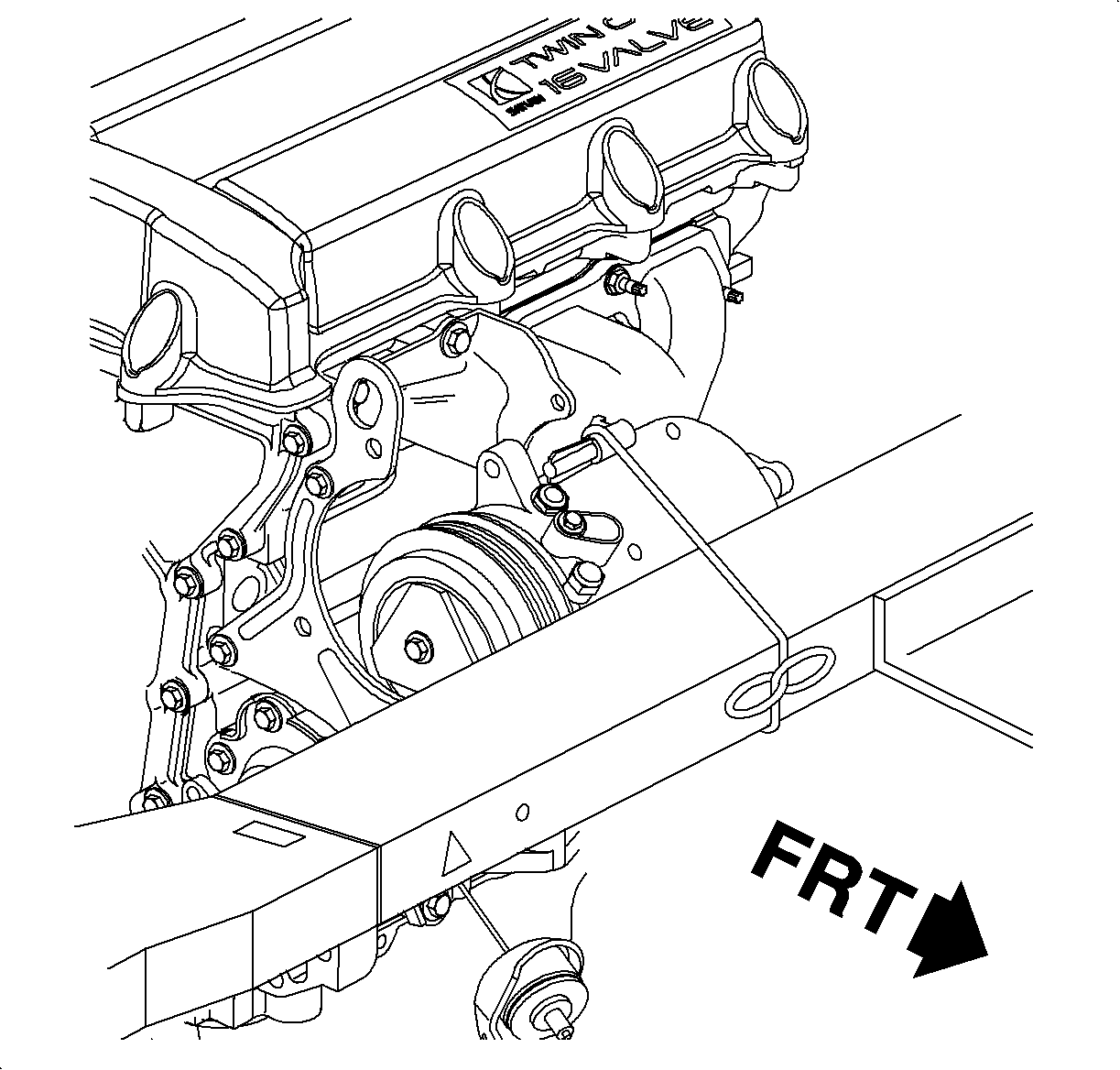
Important: The rear compressor bracket center hole is
slotted for ease of compressor removal and installation.
Important: It is not necessary to discharge the A/C
system.
- Remove the 3 A/C compressor front bracket bolts, if equipped, attached
to the cylinder head and block. The rear bracket bolts can be removed from the compressor
or bracket attachment to the block and head.
- Tie the compressor assembly to the vehicle front support bar.
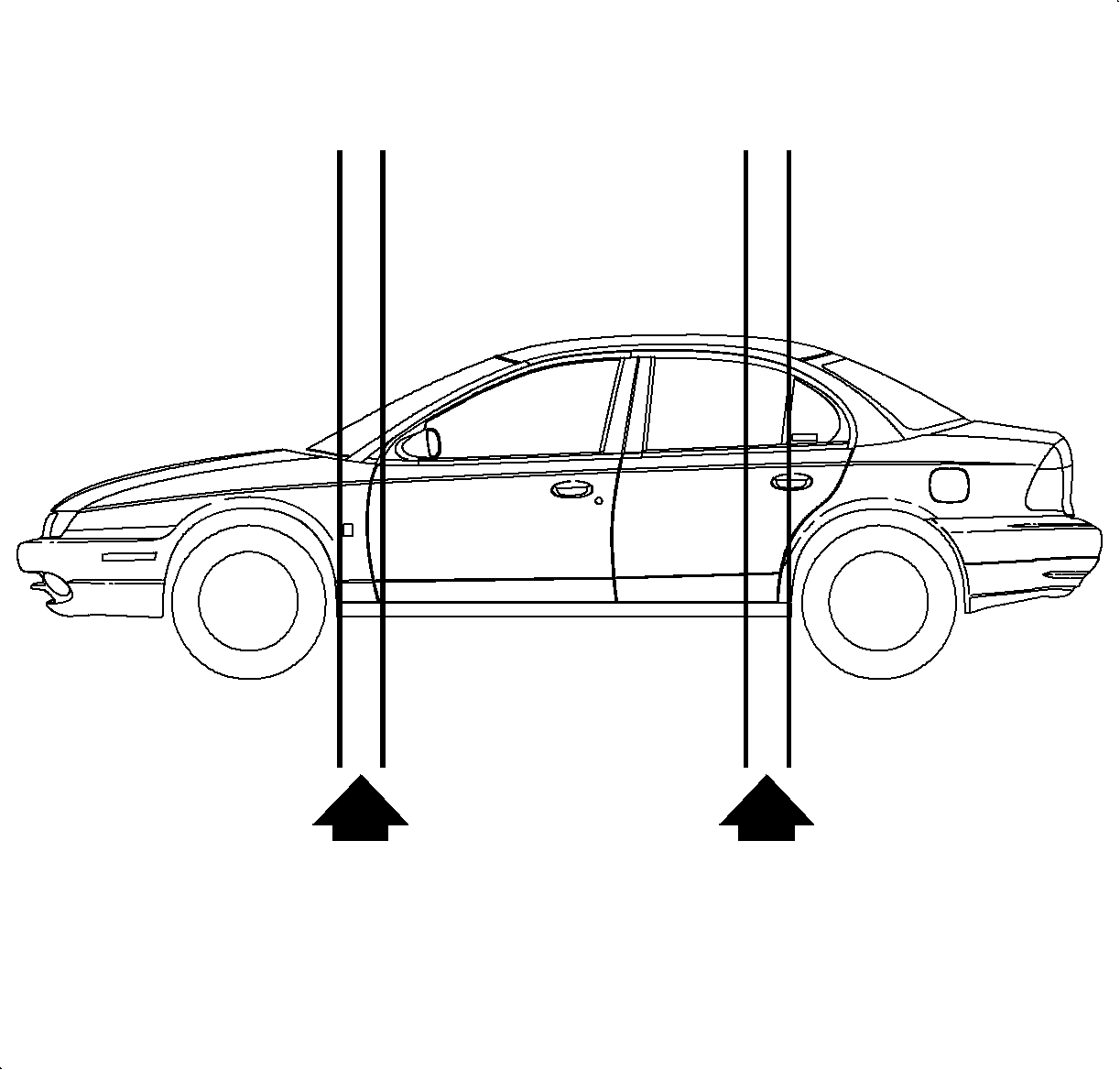
Caution: Ensure that the vehicle is properly supported and squarely positioned.
To help avoid personal injury when a vehicle is on a hoist, provide additional support
for the vehicle on the opposite end from which the components are being removed.
- Jack or raise the vehicle on a hoist.
- Drain the engine oil.

- Remove the right wheel and splash shield.
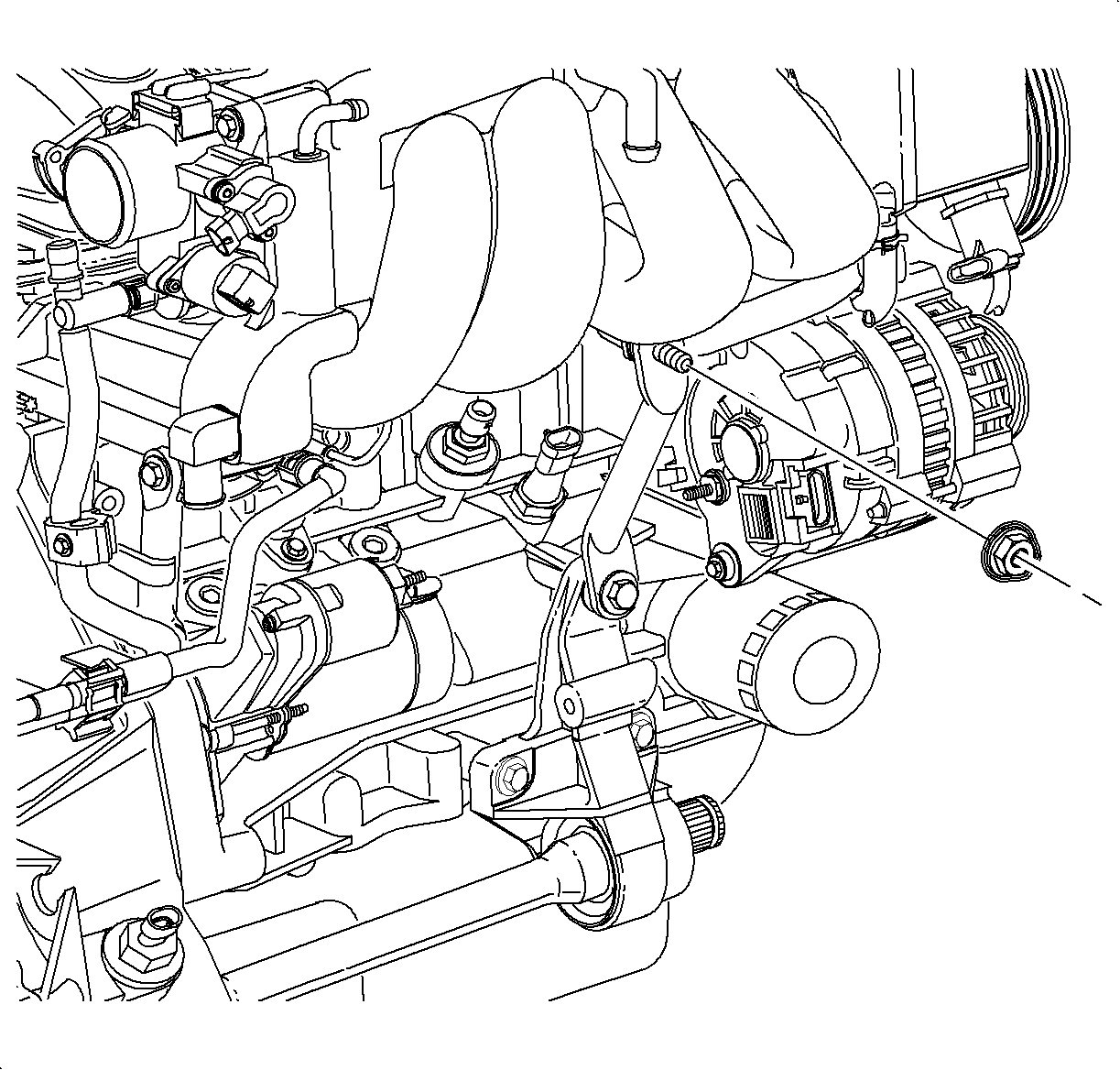
- Remove the intake manifold support brace bolt attached
to the intake manifold located next to the generator.
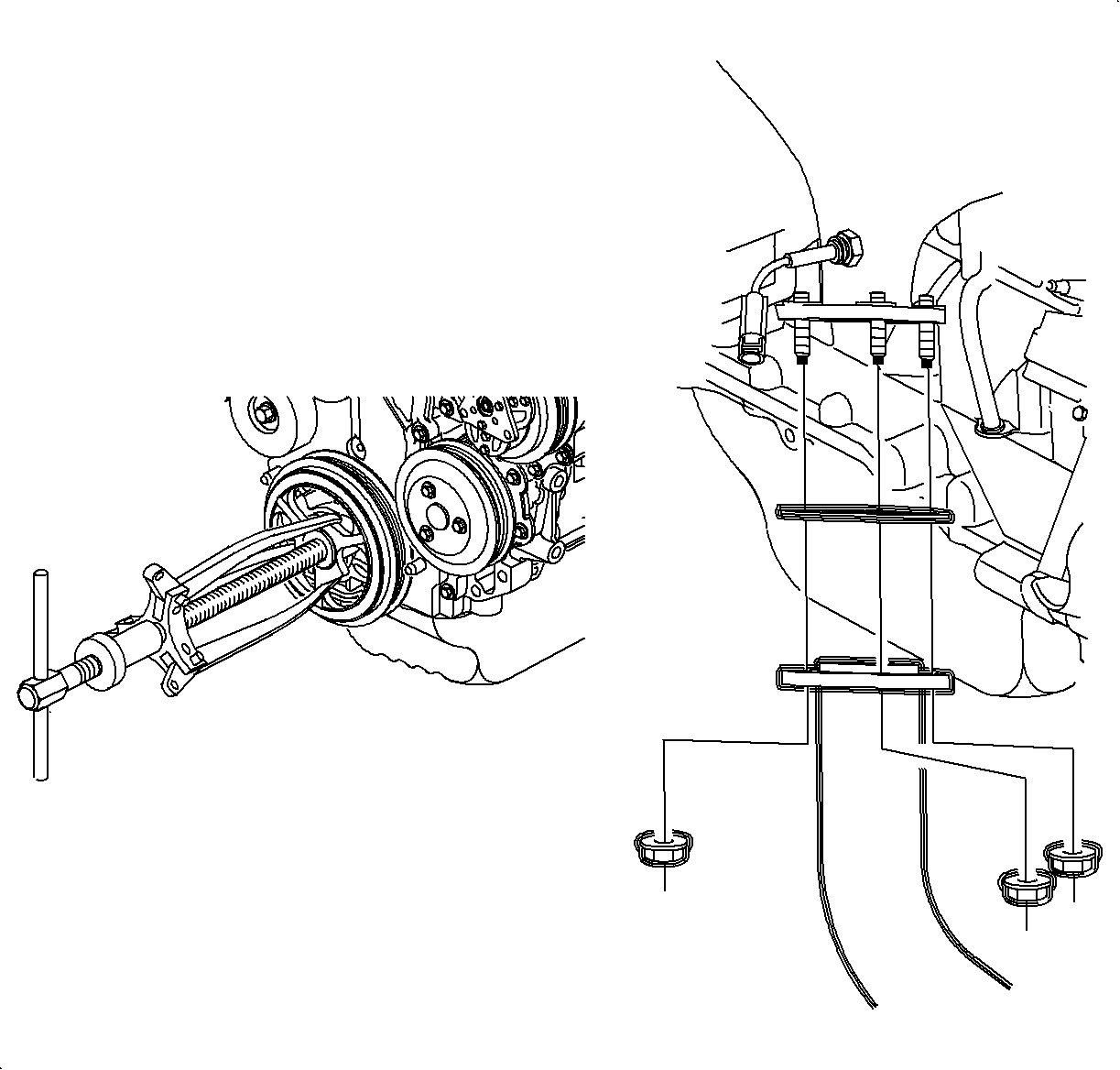
Important: Puller jaw slots are cast into damper/pulley
assembly for removal with a small 3 jaw puller if required.
- Remove the front damper/pulley assembly. Hold the damper with a strap wrench
or use a 3/4 in. square x 12 in. long piece of
wood wedged between the damper spoke and rear, lower side of the front cover when
removing the bolt.
- Disconnect the exhaust pipe from the exhaust manifold.
- Remove the 3 nuts from the flange.
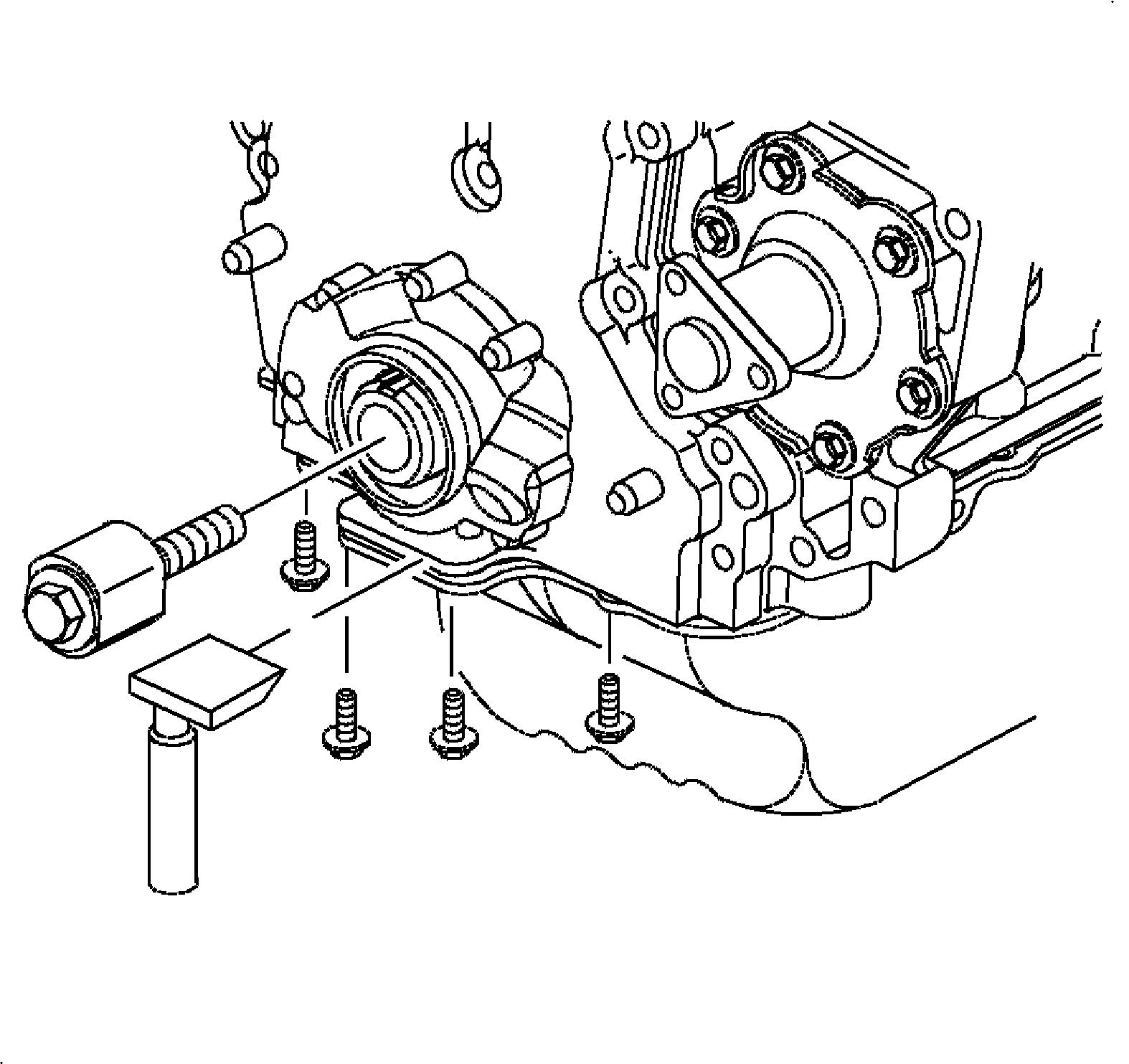
- Remove the front cover assembly.
| | Important: Install the SA9104E
with
the flat side toward the sprocket. Failure to hold the crankshaft timing sprocket
in place will cause timing chain guide damage. This tool also aligns the oil pump
gerotor during front cover installation. After the front cover assembly is loosened
and moved approximately 25.4 mm (1 in) from the engine, the crankshaft
timing gear service tool should be removed.
|
| 25.1. | Install the SA9104E
to make sure the front
crankshaft timing sprocket is held firmly in place. |
| 25.2. | Remove the 4 front oil pan bolts. |
| 25.3. | Use the SA9123E
to cut the oil pan
seal away from the front cover. |
| 25.4. | Spray the 2 dowel pin holes, upper left-hand and lower right-hand
side of the cover, in the cover with penetrating oil to facilitate cover removal off
the dowel pins. |

| | Important: One front cover assembly attachment bolt
is located under the torque axis mount flange, above the accessory drive belt pulley.
|
| 25.5. | Remove the front cover bolts. |
| | Important: The front cover assembly can be removed from
under the hood or through the wheel well.
|
| | Important: Cover the front of the engine with a shop
towel to prevent debris entry into oil gallery openings and the pan.
|
| 25.6. | Using a screwdriver, pry the front cover away from the cylinder block using
the pry location tabs provided. |
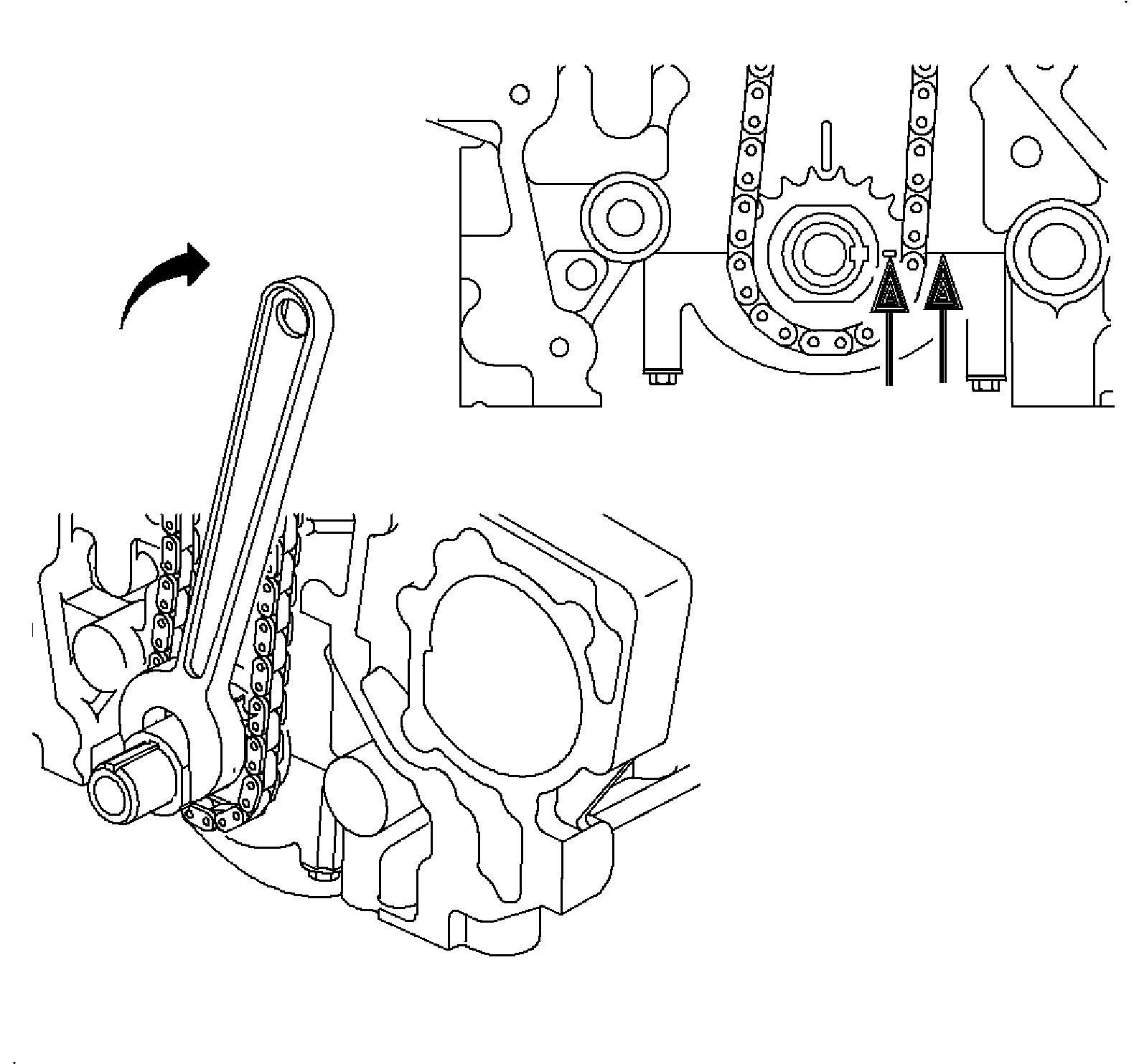
Important: Position the crankshaft 90 degrees
off top dead center to make sure the pistons will not contact the valves upon assembly.
- Rotate the crankshaft clockwise, viewed from the crankshaft accessory belt end,
so the timing mark on the crankshaft sprocket and key way align with the main bearing
cap split line.

Caution: The camshafts can rotate during timing chain and sprocket removal. Do not place
fingers or tools between the camshaft sprocket and chain during removal or assembly.
- Remove the timing chain tensioner, guides, camshaft
sprockets, and chain. Use a 24 mm wrench to hold the camshaft when removing
the sprocket bolts.
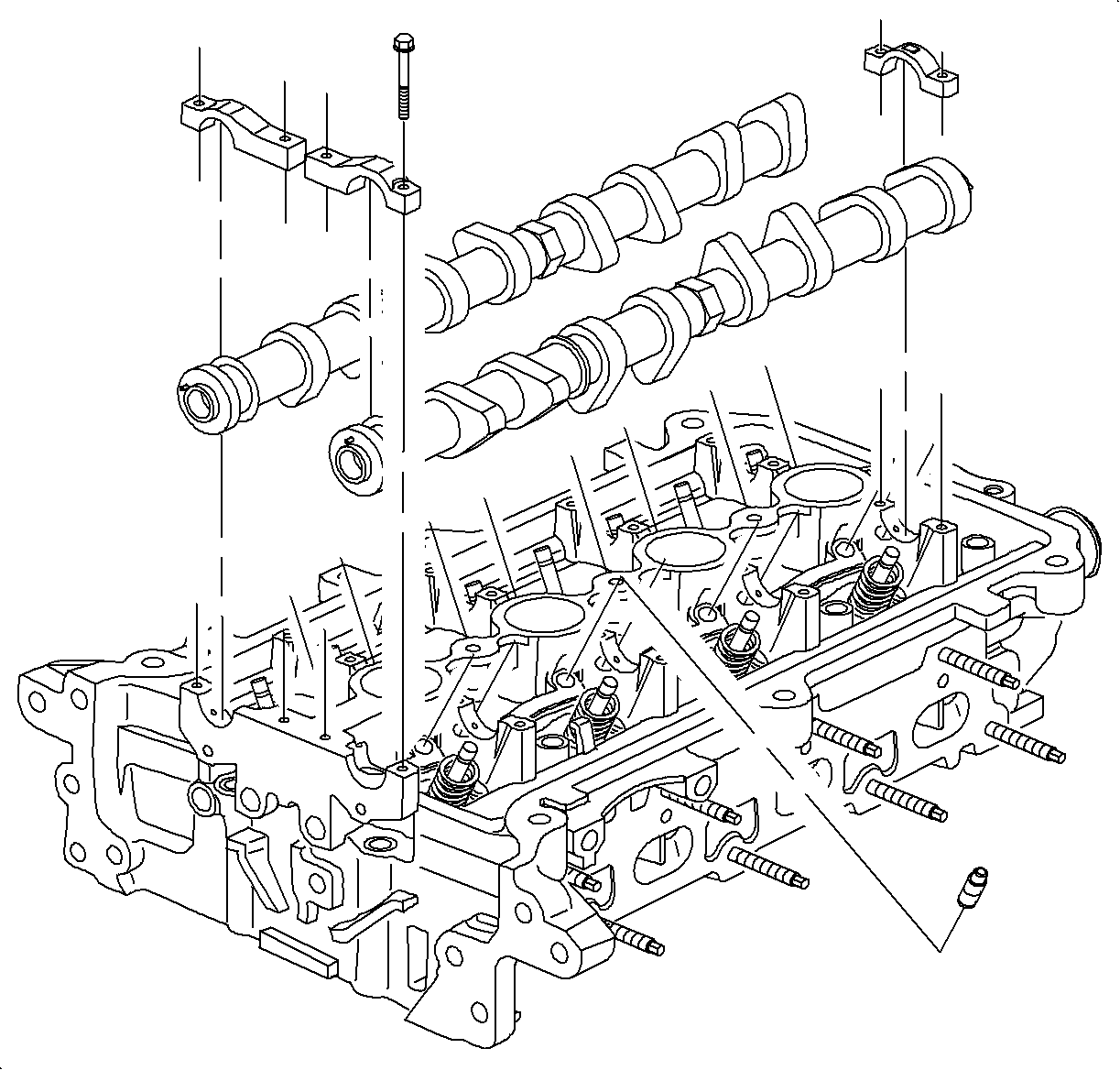
Important: Camshaft bearing caps are marked for proper
installation.
- Uniformly remove the camshaft bearing cap attachment bolts and caps.
- Remove each camshaft.
- Remove the lash adjuster and rocker arms. Keep them in order.

Notice: Only use a six point socket to remove the cylinder head bolts. A 12 point socket
will round off the bolt heads.
Important: Head warpage or cracking could result from
removing the bolts out of order or when the cylinder is hot.
- Uniformly loosen and remove the 10 head bolts in several passes, in the
following sequence.
Specifications
Intake Side: 3, 7, 10, 6, 2
Specifications
Exhaust Side: 4, 8, 9, 5, 1
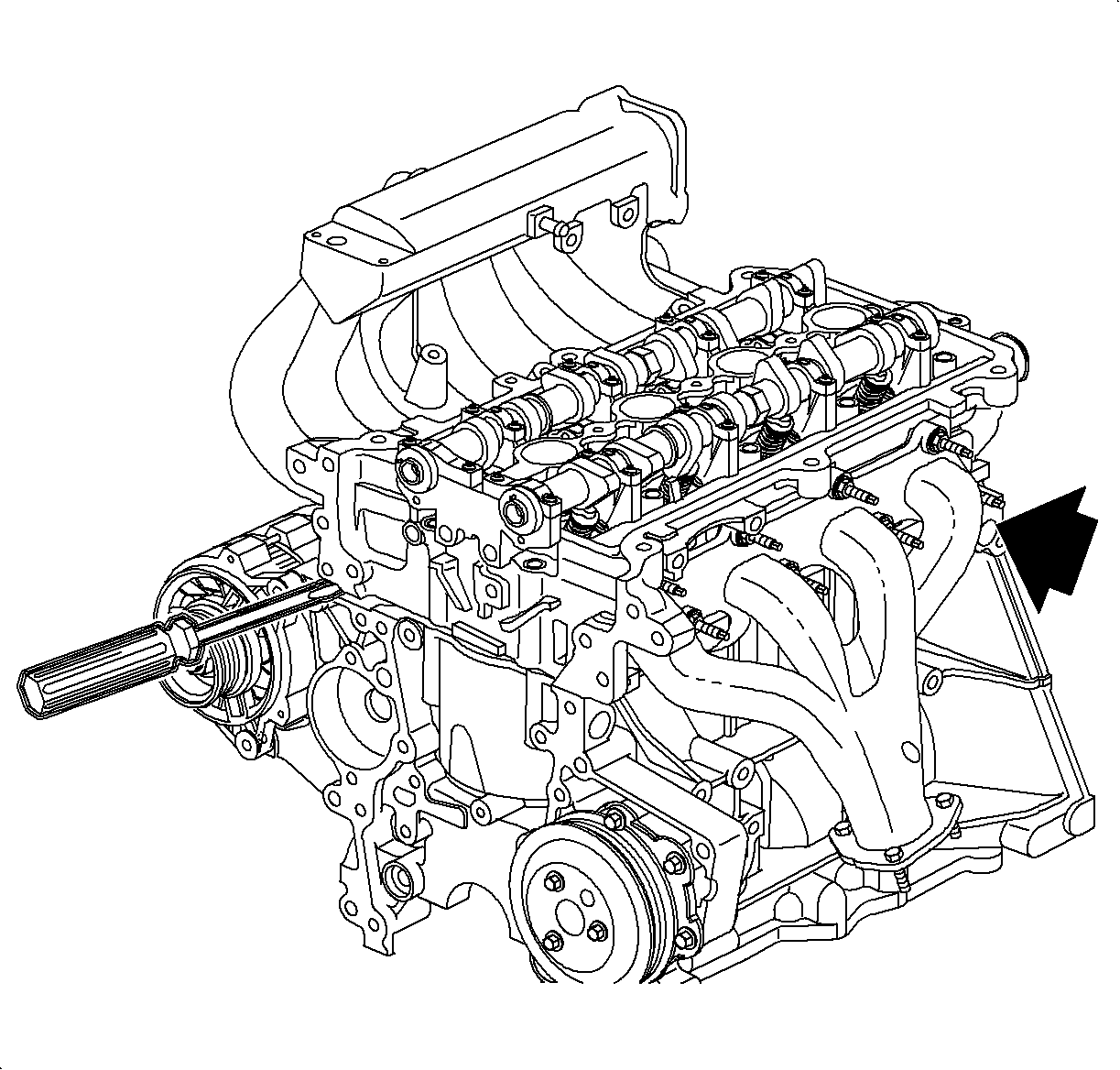
Notice: Be careful not to damage the aluminum the aluminum cylinder head and block gasket
sealing surfaces when removing the cylinder head or during cleaning.
- Lift the cylinder head from the dowels on the cylinder
block and place the head on wooden blocks or a bench. If the cylinder head is difficult
to lift off, pry with a screwdriver between the cylinder head and block bosses.


























